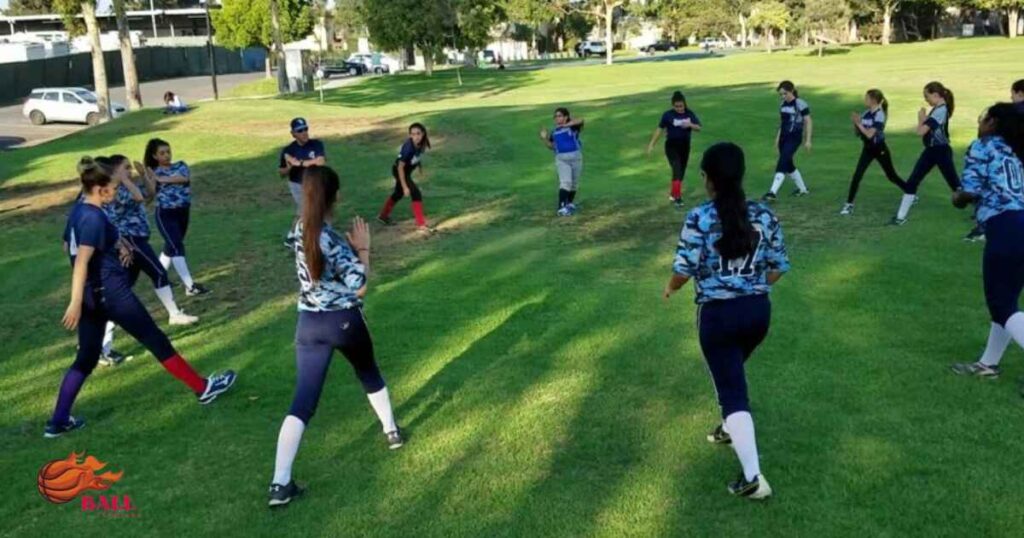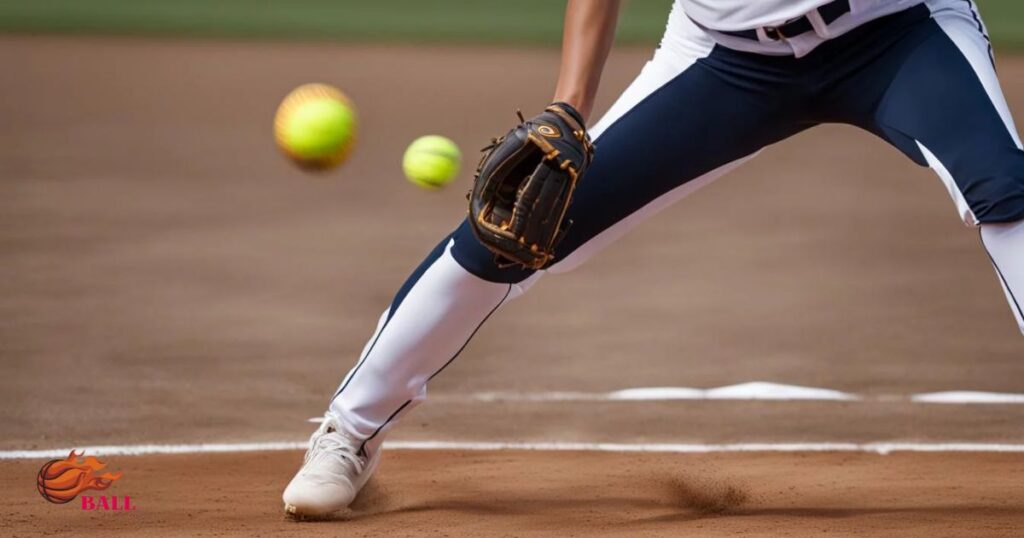When it comes to the performance of a softball pitcher, a proper warm-up routine plays a crucial role. The duration of this warm-up period can significantly impact the pitcher’s ability to throw accurately and avoid injury. However, determining the ideal length of time for a softball pitcher to warm up can be a complex task, as it depends on various factors such as age, skill level, and external conditions.
This article aims to provide a comprehensive guide on how long a softball pitcher should warm up based on different categories, including youth, high school, college, and professional softball pitchers. Additionally, it will explore the importance of a proper warm-up routine and offer tips on adjusting the duration based on external factors.
Key Takeaways
- The duration of a softball pitcher’s warm-up should be adjusted based on factors such as the level of competition, the pitcher’s experience and physical condition, weather conditions, age, and skill level.
- A proper warm-up routine is important as it reduces the risk of injuries, increases blood flow and raises body temperature, improves joint mobility, enhances coordination and reaction time, and optimizes performance on the field.
- The recommended warm-up time for different levels of pitchers vary, with youth pitchers requiring a minimum of 15 minutes, high school pitchers needing at least 20 minutes, college pitchers needing a minimum of 25 minutes, and professional pitchers requiring at least 30 minutes.
- Warm-up duration should be adjusted based on external factors such as weather conditions, game time, and the physical condition of the pitcher. Factors like hot and humid weather may require longer warm-up periods, while cold weather may require extra time for dynamic stretching.
Factors Affecting Warm-Up Duration

The duration of a softball pitcher’s warm-up is influenced by various factors. Firstly, the level of competition plays a significant role, as pitchers at higher levels may require a longer warm-up to adequately prepare for the intensity of the game. Additionally, the individual pitcher’s experience and physical condition are important considerations. A more experienced softball pitcher who is in good physical shape may require a shorter warm-up compared to a beginner or someone recovering from an injury.
Furthermore, weather conditions can impact the warm-up duration. In colder temperatures, pitchers may need more time to properly warm up their muscles and maintain flexibility. Overall, understanding these factors allows pitchers to tailor their warm-up routine to meet their specific needs, ensuring they are adequately prepared for optimal performance. Transitioning into the subsequent section about the importance of a proper warm-up routine, it is crucial to recognize that a well-executed warm-up not only prevents injury but also enhances performance on the field.
Importance Of A Proper Warm-Up Routine
Factors such as the level of competition, pitcher’s experience, physical condition, and weather conditions all contribute to the duration of a softball pitcher’s warm-up, emphasizing the importance of a proper warm-up routine. A proper warm-up routine is crucial for a softball pitcher as it helps prepare the body for the physical demands of pitching. It increases blood flow to the muscles, raises body temperature, and improves joint mobility, reducing the risk of injuries.
Additionally, a warm-up routine allows the pitcher to mentally focus and prepare for the game ahead. It helps improve coordination, reaction time, and overall performance. By taking the time to properly warm up, a pitcher can optimize their physical and mental readiness, ensuring they perform at their best and minimize the risk of injury during the game.
Recommended Warm-Up Time For Youth Pitchers
To ensure proper preparation, youth softball pitchers should warm up for a minimum of 15 minutes before taking the mound. This recommended warm-up time allows young pitchers to gradually increase their heart rate, improve blood circulation, and prepare their muscles for the demands of pitching. During this time, they can perform a series of dynamic stretching exercises that target the major muscle groups used in pitching, such as the shoulders, arms, and legs.
Incorporating light cardio exercises, such as jogging or jumping jacks, can help increase body temperature and enhance overall flexibility. It is important to note that this 15-minute warm-up should be followed by a proper throwing progression, gradually increasing the intensity and distance of throws, before the pitcher is ready to start pitching at full speed. By adhering to this recommended warm-up time, youth pitchers can reduce the risk of injury and optimize their performance on the mound.
Recommended Warm-Up Time For High School Softball Pitchers
High school pitchers should warm up for a minimum of 20 minutes before taking the mound to ensure proper preparation and reduce the risk of injury. This warm-up time allows the pitcher’s body to gradually increase in temperature, blood flow, and flexibility, improving performance and preventing strain on muscles and joints. Here are three key components of a recommended warm-up routine for high school pitchers:
- Dynamic Stretching: Incorporate dynamic stretches that involve controlled, active movements to increase range of motion and activate the muscles used in pitching.
- Throwing Progression: Start with short-distance throws and gradually increase the distance to build arm strength and improve accuracy.
- Pitching Practice: Include a series of gradually increasing pitch intensity and volume, focusing on proper mechanics and control.
Recommended Warm-Up Time For College Pitchers

College pitchers should warm up for a minimum of 25 minutes before taking the mound to ensure proper preparation and reduce the risk of injury. This extended warm-up time is necessary due to the higher level of competition and the increased demands placed on the pitcher’s body. A thorough warm-up routine helps to activate and prepare the muscles and joints, improving performance and preventing potential injuries.
To give a visual representation of a recommended warm-up routine for college pitchers, the following table outlines a sample 25-minute warm-up plan:
| Time (minutes) | Activity |
|---|---|
| 5 | Dynamic stretching |
| 7 | Arm and shoulder exercises |
| 8 | Pitching drills |
Recommended Warm-Up Time For Professional Softball Pitchers
Professional pitchers should adhere to a warm-up time of at least 30 minutes to properly prepare their bodies and minimize the risk of injury. This extended warm-up period allows pitchers to gradually increase their heart rate, improve blood flow to the muscles, and increase joint mobility. To paint a clear picture of the recommended warm-up routine for professional pitchers, here are three essential components:
- Dynamic Stretching: Dynamic stretches, such as arm circles and leg swings, help to improve flexibility and range of motion.
- Throwing Progression: Starting with light tosses and gradually increasing the intensity and distance of throws helps pitchers to warm up their throwing arm and establish proper mechanics.
- Pitching Drills: Incorporating specific pitching drills, like windmill arm swings and simulated pitches, enables pitchers to fine-tune their technique and build muscle memory.
Adjusting Warm-Up Duration Based On External Factors
Adjusting the warm-up duration based on various external factors is imperative for softball pitchers to optimize their performance and reduce the risk of injuries. Factors such as weather conditions, game time, and pitcher’s physical condition can greatly impact the effectiveness of a warm-up routine. For example, on a hot and humid day, pitchers may need a longer warm-up period to ensure their muscles are properly loosened and prepared for the game. Conversely, in cold weather, pitchers may need to spend extra time on dynamic stretching exercises to prevent muscle strains.
The time of the game can also affect warm-up duration. Early morning games may require a longer warm-up period compared to evening games when pitchers have already been active throughout the day. It is important for pitchers to be aware of these external factors and adjust their warm-up duration accordingly to maximize their performance on the field and minimize the risk of injuries.
Transition: Now that we have discussed the importance of adjusting warm-up duration based on external factors, let us delve into a sample warm-up routine for softball pitchers.
Sample Warm-Up Routine For Softball Pitchers

To ensure optimal performance and reduce the risk of injuries, it is essential for softball pitchers to follow a well-designed warm-up routine. Here is a sample routine that can help pitchers prepare their bodies for the demands of the game:
- Jogging: Start with a light jog to increase heart rate and warm up the muscles.
- Dynamic Stretching: Perform dynamic stretches such as arm circles, leg swings, and trunk rotations to increase flexibility and range of motion.
- Pitching Progression: Begin with easy tosses and gradually increase the intensity and speed of the pitches. This helps to activate the pitching muscles and improve accuracy.
FAQ’s
How many pitches should softball pitcher throw to warm-up?
During her warm-up, the pitcher receives roughly eight pitches. She ought to pitch every time. The final two pitches should be thrown by her at full stretch.
How many times a week should a softball pitcher throw?
Teens ought to pitch for no more than three days straight. After that, pitchers of all ages should refrain from throwing any pitches during practise or competition for two days. The number of pitches a pitcher is allowed to throw in a game varies between leagues.
What is the best way to warm-up for pitching?
Begin by stretching your legs, focusing on the calves, hamstrings, quadriceps, and hip flexors. Next, move to the core area, doing trunk twists, trunk circles, and lateral bends. For your arms and shoulders, try arm circles, stretching the back of your shoulders, biceps stretches, and reaching overhead.
Why can softball pitchers pitch every day?
The research shows that softball pitchers often don’t get enough rest between games. It is due to people think underhand pitching is safer than overhand. However, the study found that softball pitchers don’t recover faster than baseball pitchers. This means softball pitchers can still get tired and injured, especially since they pitch a lot.
Conclusion
In conclusion, the duration of a softball pitcher’s warm-up should vary depending on various factors such as age, level of play, and external conditions. It is crucial for pitchers to have a proper warm-up routine to prevent injuries and improve performance. Youth pitchers are recommended to have a longer warm-up time compared to high school, college, and professional pitchers. Adjustments in warm-up duration should also be made based on external factors such as weather conditions. Overall, a thorough warm-up routine is essential for softball pitchers to excel on the field.








